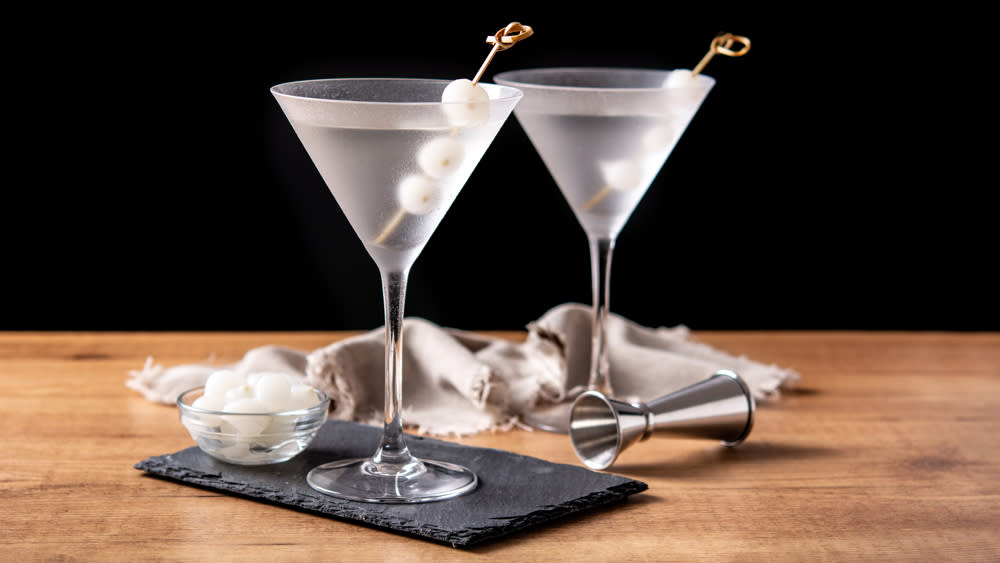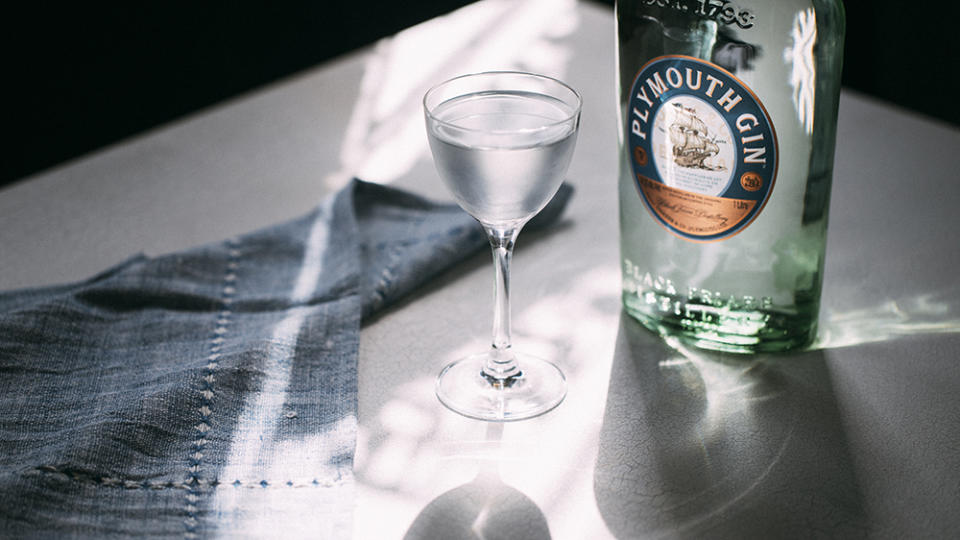How to Make a Gibson, the Gin Martini With a Surprising—and Delicious—Garnish

The Gibson is a weird drink. It’s a Martini on vinyl. It’s a Martini in a bow tie and a pair of suspenders. Of all the cocktails in the canon, the Gibson feels like it is the one that most needs to justify its own existence. It’s like a pocket watch—just as functional as a wristwatch but esoteric and willfully obscure. “Does that guy have a pocket watch?” you might ask looking across a room, and when confirmed, follow up with, “Ok, but why?” On one hand it’s none of your business, but on the other, it does seem like he wants you to ask him about it.
So: Why a Gibson?
More from Robb Report
How to Make a Sidecar, the Classic Cognac Cocktail That's Stronger Than Your Average Sour
How to Make a Penicillin, the Most Successful New Whiskey Cocktail of the Millennium (So Far)
How to Make a Pornstar Martini, a Delicious Vodka Cocktail That's for Adults Only
Technically, a Gibson is just a Martini garnished with a small, pickled onion instead of the standard olive. The onion is the Gibson’s defining characteristic, why it exists, and the sole reason that bars across the world stock cocktail onions. Everyone knows this, and it’s true. And one of the really annoying things about the Gibson is that it’s also not true.
When the Gibson shows up in print in 1908, in “Cocktail” William Boothby’s, The World’s Drinks and How to Mix Them, it’s just gin and vermouth. No onion. Same in 1913, same in 1917. So why a Gibson back then? It used to be that a Martini had orange bitters, and a Gibson didn’t. That was the difference. Even more annoying: As to precisely when and how it got a pickled onion, no one has any idea. A survey of cocktail books from the ‘30s and ‘40s show that half of them have an onion’d Gibson and the other half don’t. The bitters were beginning to fall off the Martini, and I guess the Gibson had to distinguish itself somehow. Once David Embury got ahold of it in his mysteriously influential The Fine Art of Mixing Drinks in 1948, it became law: “The distinction between the Martini and the Gibson is simple,” he wrote, “The Martini is served with an olive, the Gibson with a small, pickled cocktail onion.”
This still doesn’t answer the principal question. Aside from those of us (myself among them) who prefer onions to olives, why drink a Gibson? Asking the people who’ve ordered them from me across the last 15 years, I’ve gotten two main responses:
The first is temperature: Everyone likes olives in their Martini, so the olives are staged on the bartop for speed and ease, and have therefore been at room temperature for hours. Three giant room-temp olives function as anti-ice cubes, warming up the drink before it ever hits your lips. Not so with onions—no one ever orders Gibsons, so when they do, the bartender has to retrieve the onions from their jar in the back of the fridge. The cocktail’s obscurity is its strength.
The second is clarity. The word “Martini” contains multitudes—vodka or gin, shaken or stirred, olives or twist—while the word Gibson refers exclusively to a stirred mixture of gin and dry vermouth with an onion. Depending on the bar you’re in, the busyness of the bartender and the quantity of ambient noise, the word “Gibson” can be the easiest way to make yourself understood.
These two are still valid, but becoming a bit dated. A quality modern bar obviates both these concerns. So finally, in 2023, why order a Gibson? Because cocktail onions are delicious. Because pickling onions is easy, and you can tailor your onions to be the exact right foil for your favorite gin-vermouth combo. If a bar puts a Gibson on their actual menu, I assume they’ve tailored them to be perfect little garnish snacks, and that’s a drink I’m going to order.
It’s a worthy reminder: You don’t always have to do the mainstream thing. A pocket watch still tells the time.
Gibson
2.25 oz. gin
0.75 oz. dry vermouth
Up to 1 tsp. onion brine (optional)
Add all ingredients to a mixing glass with ice, and stir briskly for 15 to 20 seconds. Strain into a pre-chilled cocktail glass, and garnish with one or three pickled onions.
NOTES ON INGREDIENTS

Gin: Every gin makes a good Martini, so you’ll have plenty good luck with whatever gin you like. Personally, though, I like to lean into the savoriness with the gin. You can go with something like Plymouth, that has a classic flavor profile but is a little more full-bodied, or something outright culinary/savory, like the sarsaparilla in Aviation Gin, the Mediterranean herbaceousness of Gin Mare, or the coniferous explosion of St. George Terroir.
Vermouth: While I’m pretty particular about the vermouth in Martinis, the hint of onion brine gives this personality that can compensate for the ethereal whispers of the barely there vermouths. My perennial recommendation is Dolin Dry, but Noilly Prat or the Vya Extra Dry both work great, as would others.
Onion Brine: Even if you submerge two or three good-sized cocktail onions in the drink, the experience of sipping it is surprisingly subtle. In response to this, or perhaps to just help differentiate this cocktail from the Martini, several recipes call for the addition of some of the onion pickling liquid. This gets intense in a hurry, and I don’t personally like it at all. If you do it, I can’t in good conscience recommend more than a teaspoon.
Pickled Onions: Make or buy. As mentioned it’s easy to pickle onions, but if you can’t be bothered, the ones from Collins and from Sable & Rosenfeld are spoken of well. If you’re in NYC you can take John deBary’s advice and go to the Pickle Guys.
If you’d like to make them, however, the world opens up to you. There are 10,000 recipes on the internet and I can’t adjudicate among them. I can only point you to Leo Ribitschek’s recipe, who at the time of publishing was beverage director of both Eleven Madison Park and the NoMad, and as such standing in front of some of the best kitchens in the world.
Culinary Masters 2023
Don’t miss the food event of the year. Register for Robb Report’s Culinary Masters now. Or, for more information on Robb Report experiences, visit RR1
Best of Robb Report
Why a Heritage Turkey Is the Best Thanksgiving Bird—and How to Get One
The 10 Best Wines to Pair With Steak, From Cabernet to Malbec
Sign up for Robb Report's Newsletter. For the latest news, follow us on Facebook, Twitter, and Instagram.

